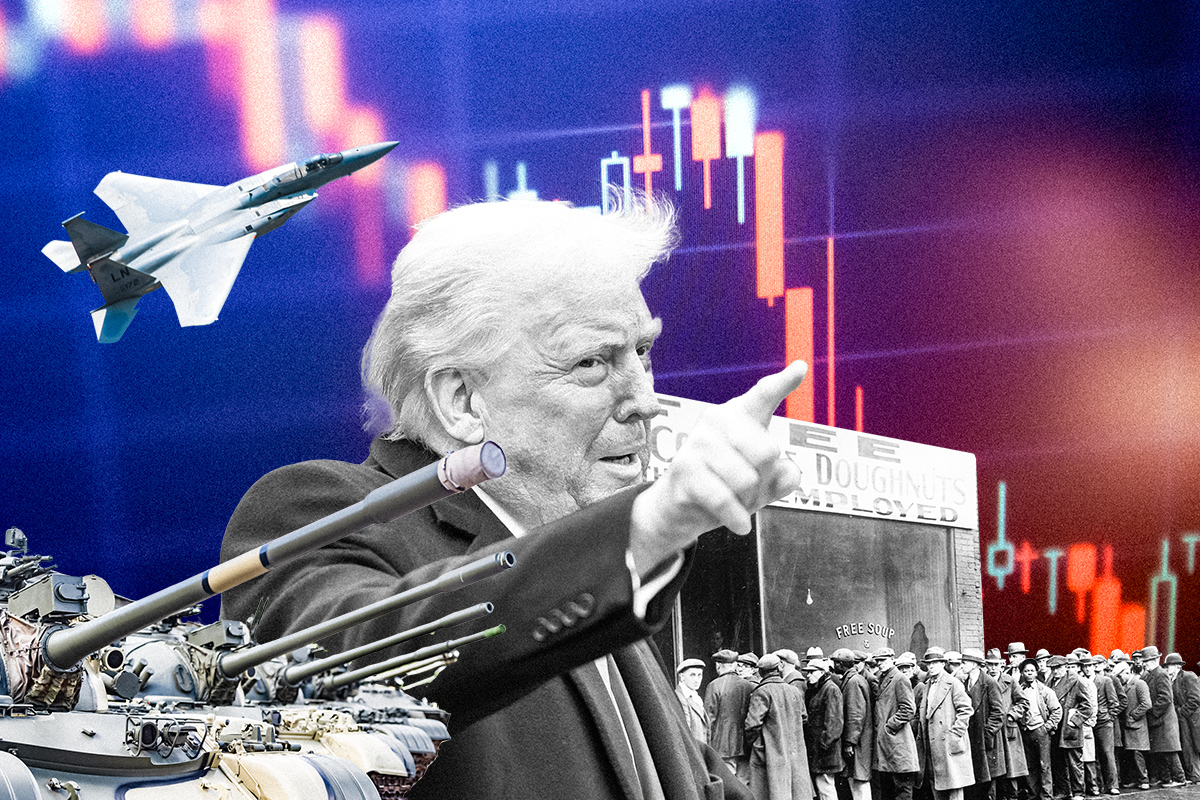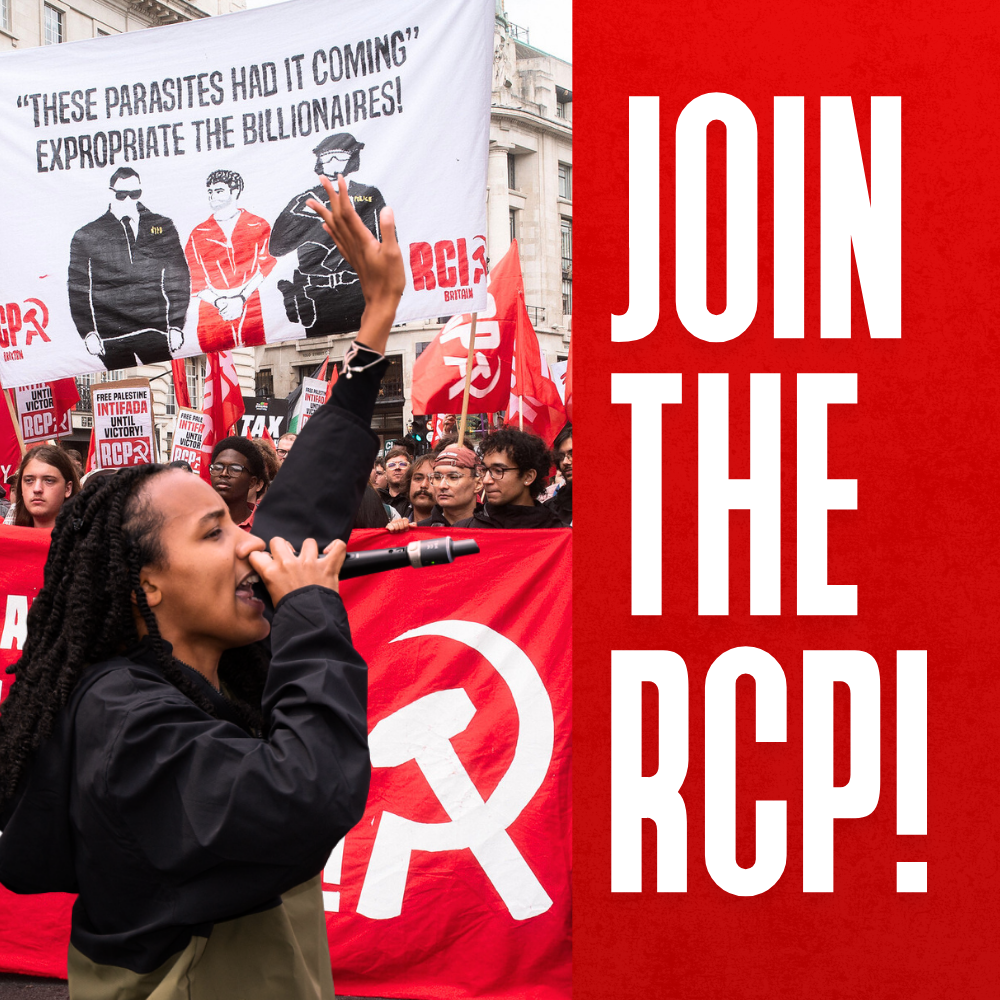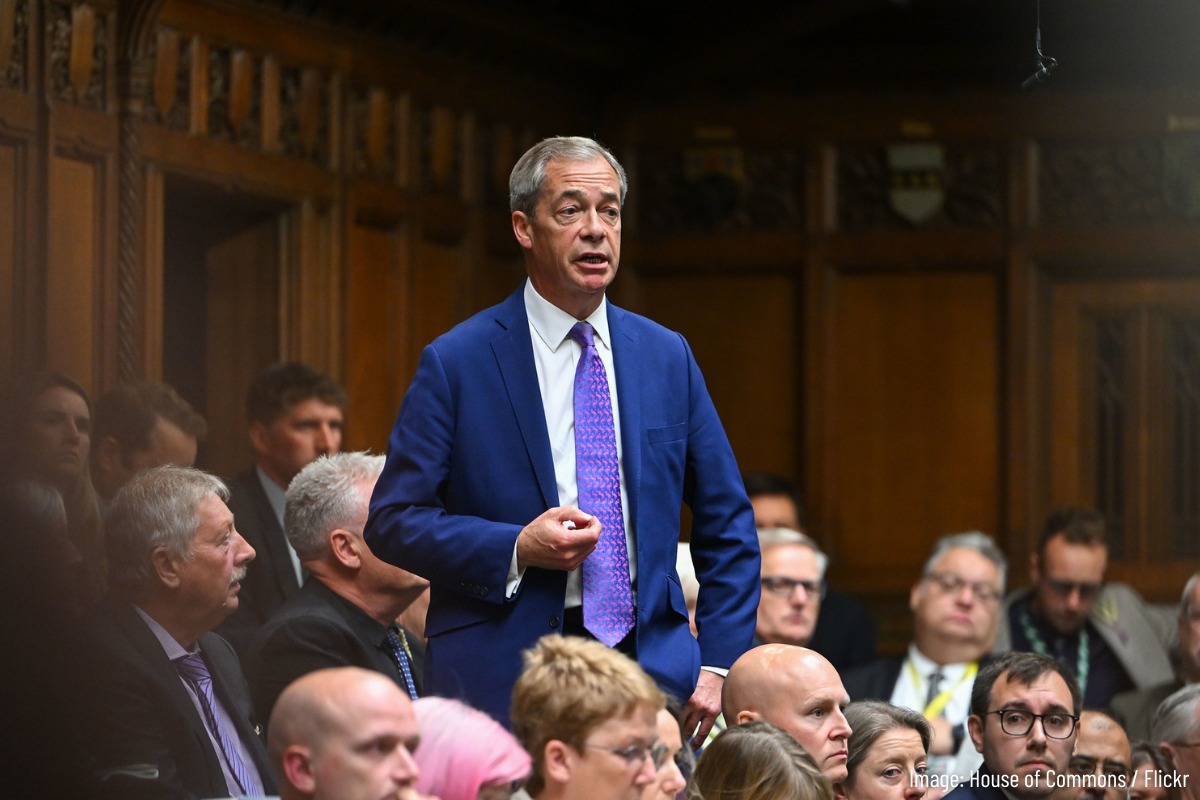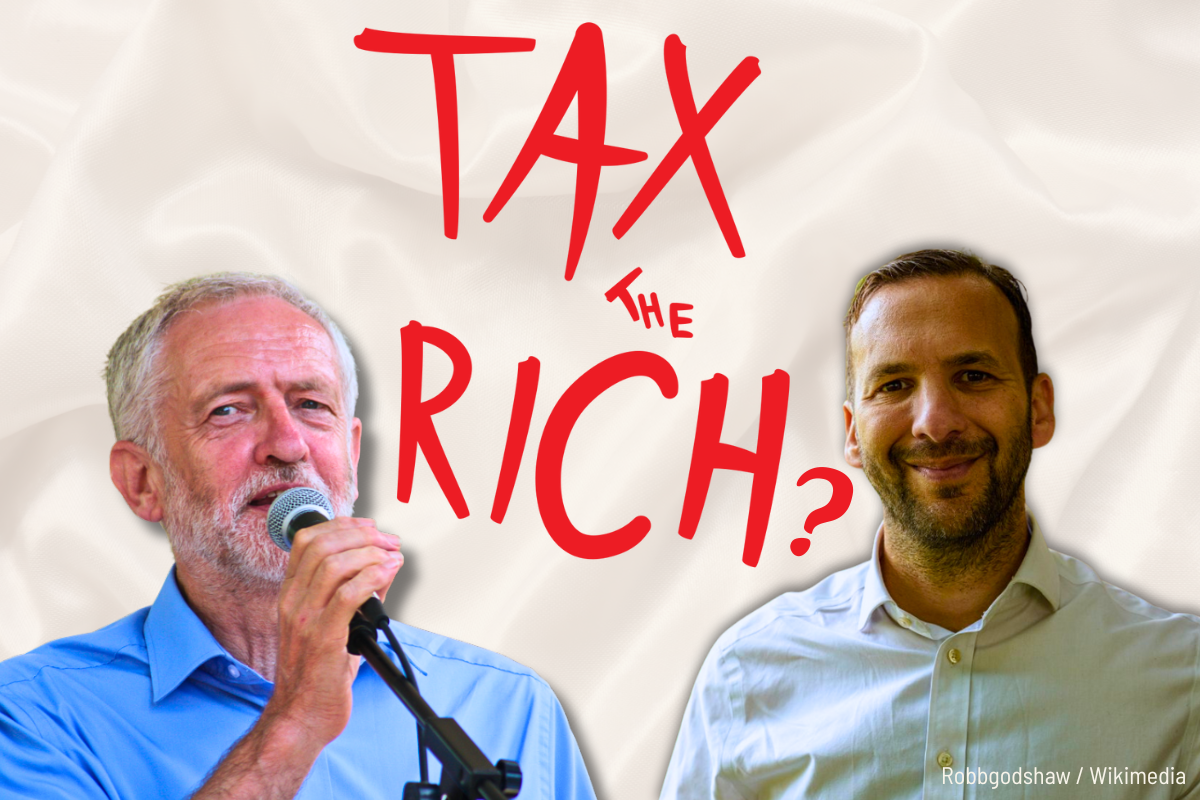See below for the latest update from our International on Trump’s tariffs.
American author Mark Twain famously remarked that “history doesn’t repeat itself – but it often rhymes”.
Today, there is more than a whiff of the 1930s in the air.
‘Beggar-thy-neighbour’ protectionism is back. An escalating trade war threatens to push the world economy into a new slump. European powers are calling for rearmament. And a right-wing Labour government is set on implementing a programme of vicious cuts.
In pursuit of their own narrow interests, meanwhile, madmen like Zelensky and Netanyahu are trying to drag the rest of the planet into World War Three. And bellicose leaders in London, Paris, and Berlin are cheering them on.
With his ‘Liberation Day’ blitzkrieg of tariffs, Donald Trump has poured petrol on an already raging fire.
Washington’s ‘friends’ and foes alike are set to face punitive duties on exports destined for America. A baseline levy of 10 percent will be applied to nearly all US imports. China, Japan, and the EU will see total tariffs of around 65 percent, 24 percent, and 20 percent, respectively.
And despite the Prime Minister’s nauseating fawning in the Oval Office, Britain will not be exempt. Trump has promised to slap a 10 percent tariff on UK exports, increasing to 25 percent for cars, steel, and aluminium. So much for the ‘special relationship’.
The direct impact of these tariffs will be a devastating blow for Britain’s struggling industries. Steelworkers in Scunthorpe and Port Talbot are already facing a jobs massacre. And higher trade barriers will only accelerate this terminal crisis.
The indirect effects of rising protectionism will be even more cataclysmic. Global economic growth will slow, or even fall. Supply chains will fracture and markets will fragment. Prices will rise.
The spectre of ‘stagflation’ (a toxic cocktail of recession and inflation) looms – and with it, a fresh, intensified wave of austerity and attacks on the working class.
This marks the end of an era. A new, turbulent chapter is opening up in the ongoing crisis of capitalism. We are entering uncharted waters.
But there is no going back. Globalisation and the postwar liberal world order are dead. The ‘free’ market has failed. The system is at an impasse.
Only the fight for worldwide socialist revolution can get us out of this capitalist quagmire.
America First, Britain last
Keir Starmer puts on a brave face in Parliament, boasting that his deft diplomatic approach towards his US counterpart has spared the UK from more damaging tariffs. But the truth is that Britain is set to be battered by Trump’s ‘America First’ agenda.
Economists are suggesting that the Labour government’s budgetary breathing space has been wiped out by the shockwaves of protectionism emanating from across the Atlantic – at a time when the UK economy is already struggling to grow, and the financial markets are breathing down Britain’s neck.
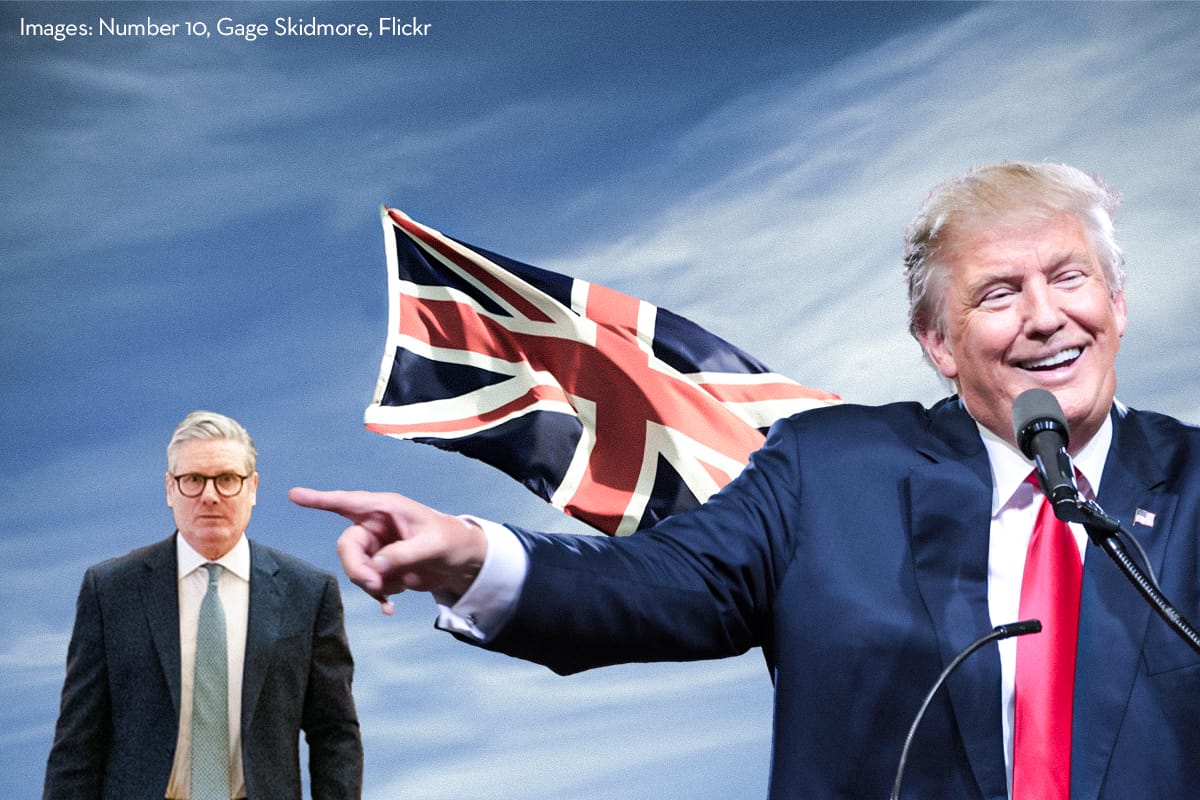
This will mean a further sharpening of the knives by Chancellor Rachel Reeves.
As trade tensions heighten, meanwhile, pressure will grow on Downing Street to join the EU and Canada in imposing retaliatory measures on US exports. Starmer will be increasingly torn between siding with Brussels and sidling up to the White House.
Added to this dilemma is the danger of Chinese goods, diverted away from America, flooding the UK market.
At the same time, the UK PM’s continual deluded bluster about forging a ‘coalition of the willing’ to support Ukraine – at a time when Trump is trying to broker a ceasefire with Russia – could also anger Uncle Sam.
Workers squeezed
While Britain gets squeezed between the big imperialist powers, the capitalists are grinding the working class between the twin millstones of militarism and austerity.
Under pressure from the markets, the Labour leaders are loading the entire burden of British capitalism’s crisis onto the backs of workers, the poor, and the vulnerable.
Billions are being slashed from welfare to pay for warfare. Like his Labour PM predecessor Ramsay MacDonald, Starmer is determined to introduce draconian cuts to social spending in order to ‘balance the books’.
It seems that this big business government really does want us to return to the depression-like conditions of the 1930s.
‘Lesser evil’
The working class, in Britain and internationally, is faced with a catastrophe. In the face of this disaster, however, the ‘left’ has been found wanting; notable by its absence.
Rather than mobilising workers en masse to fight austerity, for example, trade union leaders like Sharon Graham have welcomed the prospect of extra ‘defence’ spending – provided it is spent making British bombs to ensure British jobs.
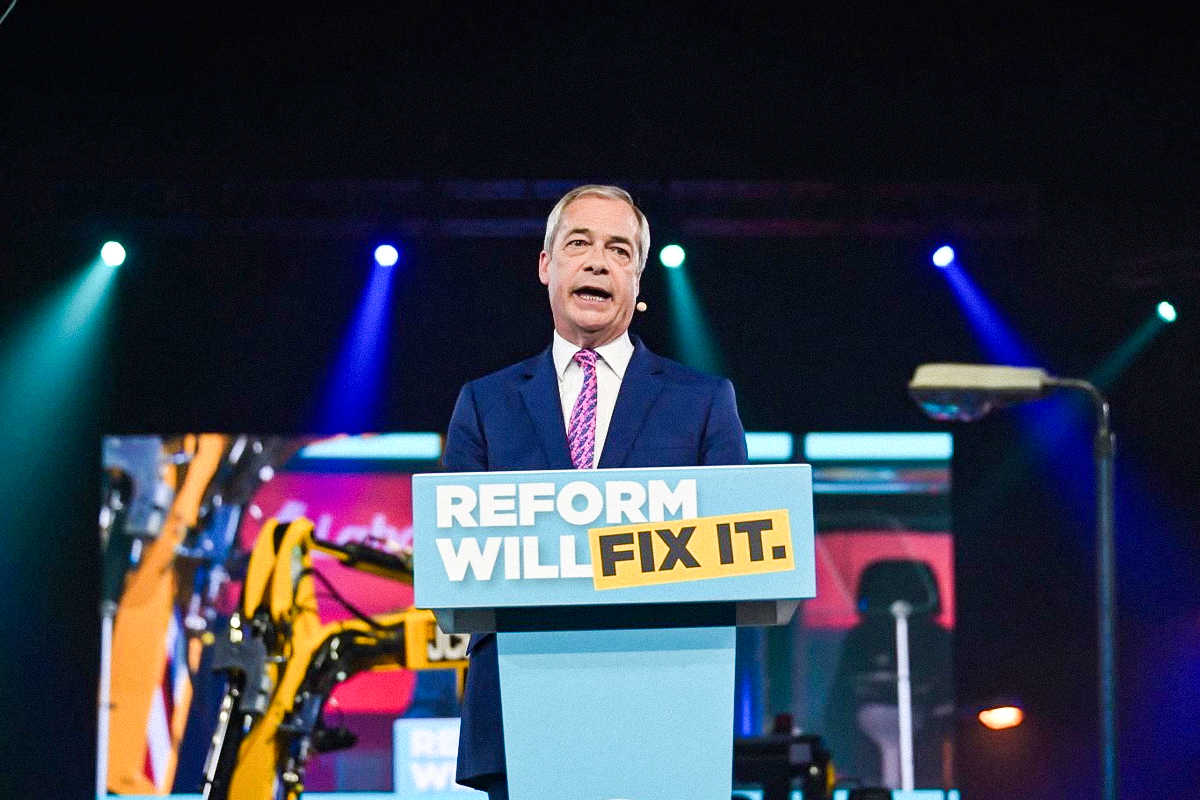
Elsewhere, instead of aiming their fire at Starmer, groups like Stand Up to Racism are focussing their efforts on fighting Farage and Reform UK.
Such a strategy completely fails to identify and target the main enemy of the working class at the present time. And it implicitly sows illusions in Labour as a ‘lesser evil’, creating confusion amongst activists and disorientating the left.
We must ask a simple question: who is currently waging war on the poor – Starmer or Farage?
Furthermore, in an effort to maintain support and deflect the anger over austerity, the Labour leaders are looking to outflank Reform on the right, with ‘tough’ talk about deporting migrants.
So, again, who is the ‘lesser evil’ here?
Whether it be the Tories, Starmer, or Farage: all these liars, warmongers, and racists are reactionary opponents of the working class.
Class independence
This is where historical analogies with the 1930s reach their limits. Trump and Farage are not fascists. Nor does support for their populist promises represent a ‘shift to the right’.
These demagogues are on the rise precisely because of the failures of the ‘left’ to offer a bold lead and provide a genuine alternative to the burning class questions that workers face.
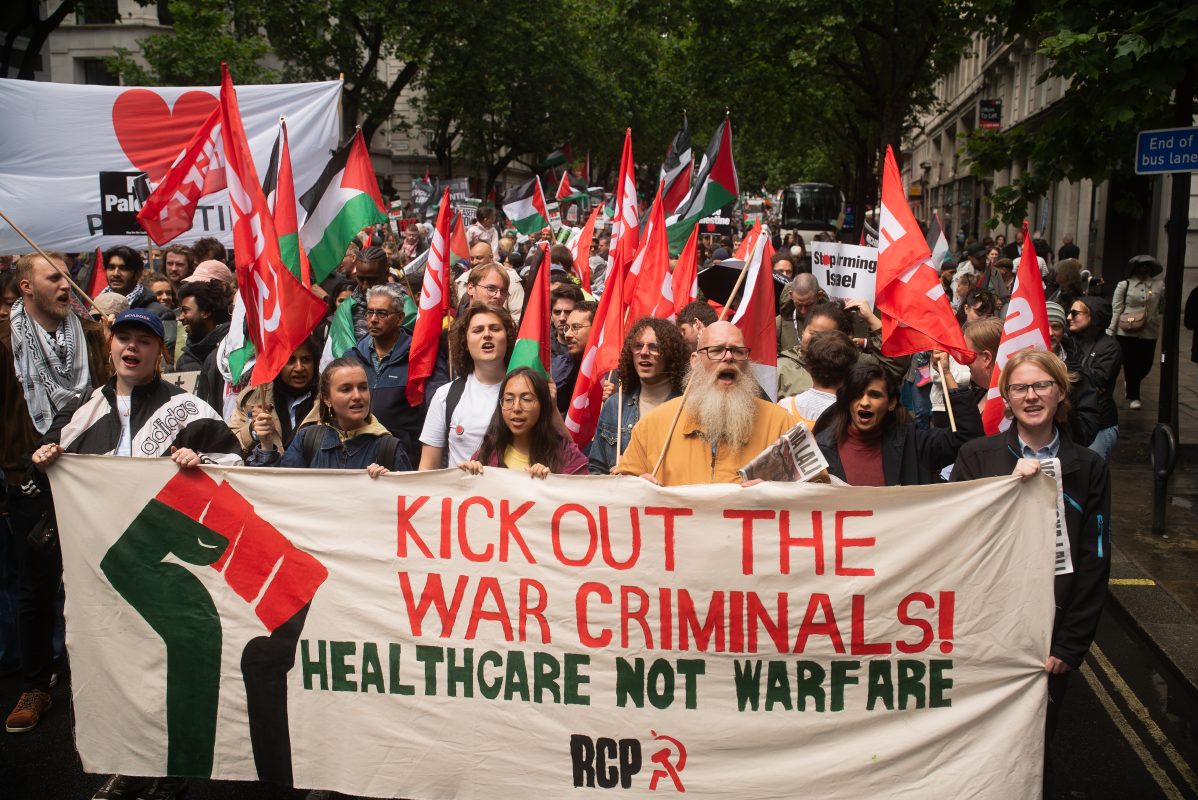
For many enraged and disgruntled voters, Reform is seen as ‘anti-establishment’. And saying “vote for anyone but Farage’s party” only helps to bolster this false perception.
Instead of rallying against the supposed ‘threat of fascism’ – and thereby behind Starmer’s Labour, at a time when it is seeking to appease the bankers and imperialists – workers and youth must take an independent class position.
This means fighting for a revolutionary solution to capitalism’s crises.
Fight for revolution
If we want to see an end to cuts, conflict, and chaos, we must organise and fight to sweep this decrepit system into the dustbin of history, along with all of those who seek to uphold it.
Only an international, rational, socialist plan of production can save humanity from the miseries of war, crisis, and poverty.
To combat the coming catastrophe, we need a global revolution against the billionaire class.
The crisis-ridden capitalist system cannot be patched up. It must be overthrown.
Trump’s tariffs mark a new turbulent era
Niklas Albin Svensson
The financial markets are reeling from Trump’s tariff announcement yesterday. The confidence of the collective capitalist class has received a body blow as Trump imposes the highest tariffs since the 19th century.
[Editor’s note: this is an update on ‘Trump’s tariff programme deepens protectionist tendencies in world economy’ which deals with the question in more depth.]
The S&P 500 was down 3 percent, Nasdaq down 4 percent. Shares in Apple were down 8 percent, Nike was down 11 percent, Ralph Lauren 12 percent, Nvidia 5 percent etc.
Anyone importing from South-East Asia was badly affected, starting with the clothing industry. Vietnam, Cambodia, Laos, Sri Lanka, Bangladesh, Indonesia and Myanmar were all targeted with tariff rates between 35 and 49 percent. It is going to have a major impact on the whole of the economy in that region. More than one third of the exports of both Vietnam and Cambodia are destined for the US market.
The fall in the stock markets revealed that the tariffs were worse than expected. 10 percent on all imports, plus selectively higher tariffs on all of the US’ main trading partners, depending on how you count, will leave an average tariff rate of 29 percent if you were to believe Evercore ISI, or 18 percent if you believe Goldman Sachs.
Either way, as Goldman Sachs points out, it is likely to go up as sectors like copper, pharmaceuticals, semiconductors and lumber receive their own tariffs.
The impact on the world economy is going to be heavy, as most countries have significant trade with the US. The six percent fall in the price of oil reveals worries by oil traders that a recession is on the cards.
Predictably, US trading partners are unhappy with the tariffs, but it was clear that they fear getting into a trade war with the US, and the consequences that would entail. Italy and Spain urged “constructive negotiations”. The British government is ‘consulting’ CEOs on retaliation. Japan is also relatively muted.
The relatively limited immediate response reflects the reluctance of governments to do further harm to their own economies by engaging in further trade measures. However, as the situation deteriorates further, whether this year or next, new measures will be introduced.
In the 1930s, all the protectionist measures weren’t introduced all at once, but gradually, in country after country, as the crisis got worse, governments changed and so on.
The South Korean government, which is trying to ingratiate itself with Trump, is attempting to solve the problem by subsidising its industries, forcing the cost onto South Korean workers. This is another measure on the cards for the bourgeoisie of affected countries. By direct subsidies or by attacking working conditions, the bourgeois can attempt to squeeze their own workers in response.
Trump is also bringing home the ‘pain’ that he promised for the US economy. Stellantis announced 900 temporary layoffs in the US at five facilities. As costs of US-made products increase because of the tariffs, US consumers will stop spending, waiting for better times. The car industry is now deeply worried about tariffs on the imported components they need to assemble cars in the US.
Export industries will also be affected, first by a shock to their own costs, and secondly by retaliatory measures. To top things off, the large-scale tariffs are expected to add something like 2.5 percent to annual inflation, which will cut into US workers’ purchasing power.
How far and how deep the effects of this will go is not known. But the unraveling of 80 years of trade integration is going to have massive implications for the world economy. All the benefits of world trade are under threat: greater productivity, cheaper products, etc.
Now, an even fiercer competition will begin on the world market as the US market becomes harder to access, and consumers, worried about the future, restrain their consumption. How long before the ailing EU imposes further tariffs, not just on the US, but on China and other countries, in order to stop ‘dumping’?
There is no doubt who will be asked to pay the price for this crisis: the working class. The working class will need to fight hard against the coming onslaught of measures: against factory closures, against attacks on wages and conditions, against cuts in social spending, etc. The intensification of international conflict will find its mirror image in the intensification of the class struggle.

